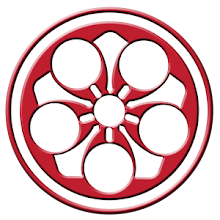
At training tonight after the usual warm up we practised sprawling. This involved a student rolling the big bouncy work out ball (yes! That’s the official name), you run towards it and sprawl on it. This is harder than it seems (good fun though) if you miss your timing it can have quite comical results.
We went on to a routine where you slip two haymakers by ducking low, (from the knees) returning a body blow (or two) if you so desire, then upon rising, ram a straight knee to the solar plexus.
Sifu explained the need to thrust the hips forward for optimum impact and height, whilst maintaining a flat footing (this helps with stability and structure) and keeping your guard up, unless you choose to clinch the neck which is equally effective.
I enjoy using knees and elbows and before learning Wing Chun I used to use them a lot at close quarters, but I have got out of the habit, it is often discouraged in class understandably because of the high risk of injury. Although, they are permitted in the tournament so I think I need to get back into the habit.
I feel comfortable throwing knees from the outside gate, but I feel I need to work on my posture with this high straight knee it looks very effective and I can imagine it really taking the wind out of an opponent.
We ended the class with some light continuous sparring; I felt sharp and got off some nice combos.
I’m beginning to realise how important it is to be mentally balanced when fighting or sparring. If I am in the zone and in the moment with a good mental attitude, the improvement is unquestionable. This needs to be utilised.
http://www.londonwingchun.co.uk/
We went on to a routine where you slip two haymakers by ducking low, (from the knees) returning a body blow (or two) if you so desire, then upon rising, ram a straight knee to the solar plexus.
Sifu explained the need to thrust the hips forward for optimum impact and height, whilst maintaining a flat footing (this helps with stability and structure) and keeping your guard up, unless you choose to clinch the neck which is equally effective.
I enjoy using knees and elbows and before learning Wing Chun I used to use them a lot at close quarters, but I have got out of the habit, it is often discouraged in class understandably because of the high risk of injury. Although, they are permitted in the tournament so I think I need to get back into the habit.
I feel comfortable throwing knees from the outside gate, but I feel I need to work on my posture with this high straight knee it looks very effective and I can imagine it really taking the wind out of an opponent.
We ended the class with some light continuous sparring; I felt sharp and got off some nice combos.
I’m beginning to realise how important it is to be mentally balanced when fighting or sparring. If I am in the zone and in the moment with a good mental attitude, the improvement is unquestionable. This needs to be utilised.
http://www.londonwingchun.co.uk/

No comments:
Post a Comment